Discover The Curious Kidcast
The Curious Kidcast

The Curious Kidcast
Author: Andy Irving
Subscribed: 24Played: 663Subscribe
Share
© Andy Irving
Description
The Curious Kidcast is a fun and educational podcast for kids aged 7 to 11 who love exploring science, nature, and curious questions about the world. Each episode answers fascinating questions kids ask—like “Why is the sky blue?”, “Do fish sleep?”, and more! Perfect for parents and families looking for an entertaining kids’ science podcast full of fun facts, discovery, and learning adventures. Tune in for engaging stories, easy explanations, and exciting explorations of the weird and wonderful things kids wonder about.
51 Episodes
Reverse
How does Santa Claus deliver presents to every house on Earth in just one night? This fun podcast for kids explores the amazing physics, quantum mechanics, and cutting-edge technology that could make Santa's mission possible.Perfect for curious kids, families who love learning together, and homeschool science lessons, this episode combines laugh-out-loud comedy with fascinating facts about time zones, Einstein's theory of relativity, warp drives, and more. Kids will discover real scientific concepts while exploring the magic of Christmas.What Kids Will LearnTime Zones: How Earth's 24 time zones give Santa extra hours to complete his journeyEinstein's Theory of Relativity: Understanding time dilation and how traveling fast affects timeQuantum Mechanics: Mind-bending concepts like superposition and quantum tunneling explained for kidsAdvanced Physics: Anti-gravity, warp drives, and pocket dimensions made fun and accessibleNature and Biology: How reindeer might use bio-magnetic fields to flyTechnology and Engineering: The incredible tech behind Santa's sleigh and AI navigation systemsPerfect for Families Who LoveEducational podcasts that make science fun for kidsHomeschool learning resources and STEM educationFamily-friendly content that parents and kids enjoy togetherNature, space, and physics topics explained simplyHoliday traditions with an educational twistCurious kids who love asking "how" and "why" questionsEpisode HighlightsDiscover how Santa could eat 500 million cookies in one nightLearn why Earth spinning at 1,670 km/hour makes Santa's job harderExplore how time travel and relativity could give Santa weeks instead of hoursUnderstand pocket dimensions and why Santa's sack is bigger on the insideFind out how quantum mechanics might let Santa be in multiple places at onceLearn about Rudolph's glowing nose as a biological navigation systemFun quiz with silly multiple-choice questions to test what kids learnedWhy Parents and Educators Love This PodcastThe Curious Kidcast makes complex science topics accessible and entertaining for children. This episode is perfect for:Homeschool families: Screen-free educational content that covers physics, earth science, and critical thinkingParents: Clean, age-appropriate entertainment that sneaks in real learningRoad trips and family time: Engaging content that sparks conversation and curiosityBedtime learning: Calm, friendly format perfect for winding down while staying curiousSTEM education: Introduces advanced scientific concepts in kid-friendly languageInteractive LearningThis episode includes a fun quiz section where kids can test their knowledge with multiple-choice questions about time zones, time dilation, and pocket dimensions. Perfect for family game time or reinforcing what they learned.Join The Curious Kidcast CommunitySubscribe to The Curious Kidcast for more episodes that answer kids' biggest questions about science, nature, space, animals, and the world around us. Every episode combines education with entertainment, making learning an adventure.Have a question you'd like answered? Visit curiouskidcast.com to submit your curious questions.Share This EpisodeHelp other families discover the joy of learning together. Share this episode with friends, homeschool groups, teachers, and anyone raising curious kids who love science and fun facts.Keywordskids science podcast, educational podcast for children, family podcast, homeschool science curriculum, STEM learning for kids, fun facts for kids, physics for kids, Christmas science, how does Santa work, parenting podcast, nature education, learn science at home, curious kids, family learning, kids education, science facts, quantum mechanics for kids, Einstein for kids, space and time, holiday learning, festive scienceFrom all of us at The Curious Kidcast, happy holidays and keep exploring the wonderful world of science!
Ever wondered why your skin gets all bumpy when you're cold, scared, or listening to amazing music? Join host Andy on The Curious Kidcast as we explore the fascinating science behind goosebumps in this fun, educational episode perfect for kids and families.This kid-friendly science podcast episode answers a question from a listener who wanted to know why their arms got covered in tiny bumps during a scary movie. Through humor, storytelling, and accurate science facts, kids will learn about evolution, the human body, and the surprising connections between goosebumps, ancient humans, and animal behavior.Perfect for Homeschooling FamiliesThis episode covers key science concepts including human anatomy, evolution, the nervous system, and comparative biology—making it an excellent resource for homeschool science curriculum, family learning time, or curious kids who love asking "why?"What Kids Will LearnHuman Biology: Understanding the arrector pili muscle and how goosebumps formEvolution Facts: Why humans still have this ancient survival mechanismBrain Science: How the hypothalamus controls body responsesAnimal Behavior: How cats, birds, hedgehogs, and other animals use the same trickEmotional Science: Why music and powerful moments can give us "frisson"Fight-or-Flight Response: Understanding the body's danger alarm systemComparative Anatomy: Connecting human and animal adaptationsKey Science Facts CoveredWhat the arrector pili muscle does and how it creates goosebumpsWhy early humans had more body hair and needed goosebumps for warmthHow goosebumps helped ancestors look bigger to scare predatorsThe science behind emotional goosebumps from music and powerful momentsWhy you can't get goosebumps on your face or palmsHow goosebumps help activate stem cells for skin repairOther leftover evolutionary traits humans still haveHow animals like cats, birds, and porcupines use the same mechanismWhy Parents and Educators Love The Curious KidcastScience made fun and accessible for kids ages 7-11Answers real questions from real kidsPerfect length for car rides, homeschool breaks, or family learning timeCombines humor with accurate scientific factsEncourages curiosity and critical thinkingNo ads or inappropriate content—100% kid-friendlySupports STEM education and science literacyGreat for auditory learners and reluctant readersFeatured Quiz QuestionsTest your family's knowledge with these fun quiz questions from the episode:What's the name of the tiny muscle that creates goosebumps?Can you get goosebumps on your nose?What's the French word for emotional shivers?Connect With The Curious KidcastHave a question your curious kid wants answered? Visit us at curiouskidcast.com to submit questions, download educational resources, and explore more episodes about science, nature, and the amazing world around us.Perfect for: Science-loving kids, homeschool curriculum, family car rides, classroom listening, bedtime learning, curious minds, STEM education, nature enthusiasts, and parents who want to nurture their child's natural curiosity.Related Topics and EpisodesIf your family enjoyed learning about goosebumps, you'll love these related science topics:Why do we hiccup?Why is yawning contagious?How does our brain control our body?What are emotions and where do they come from?Amazing animal adaptations in natureHuman evolution facts for kidsTagskids science podcast, educational podcast for children, homeschool science, why do we get goosebumps, human body facts, science for kids ages 7-11, family learning, parenting resources, STEM education, nature science, fun facts for kids, biology for kids, evolution explained for children, curious kids, educational entertainment, kid-friendly scienceSubscribe to The Curious Kidcast for more fun, educational science episodes that make learning an adventure for the whole family.
Ever wonder why summer holidays feel endless when you're a kid, but adults say the years fly by? Join host Andy on this fascinating science adventure as we explore one of nature's biggest mysteries - why time feels different as we grow older! This educational kids podcast episode combines fun facts with real brain science to help children learn about memory, perception, and how our minds work. Perfect for homeschooling families, parents looking for quality educational content, and curious kids who love to learn about science and nature. What Kids Will Learn Brain science facts: How our internal clock works and why it's so unreliable Memory and learning: Why new experiences create stronger memories The nature of time: Understanding how we measure change in the world around us Psychology for kids: How emotions affect our perception of time Fun science concepts: The "pizza theory" of life and time fractions Practical tips: How to make time feel fuller and create lasting family memories Perfect for Homeschooling and Family Learning This episode offers parents and educators a fun, engaging way to teach kids about: Science concepts in everyday life Critical thinking and observation skills Mindfulness and attention practices Memory formation and brain function The nature of human perception Educational Fun Facts Covered Why routine days feel shorter than adventure-filled days How your brain acts like a time machine The science behind why "time flies when you're having fun" Why new experiences are so important for kids and families How memory affects our perception of time passing The mathematical reason each year feels proportionally shorter Interactive Learning: Quiz Included Kids can test their knowledge with three fun science questions at the end, making this perfect for family listening and homeschool science lessons. Why Parents and Kids Love The Curious Kidcast Educational content that's actually fun for kids ages 7-11 Science made accessible and entertaining for children Perfect for family car rides, homeschooling, or bedtime learning Encourages curiosity and questions about nature and science Kid-friendly humor that keeps young learners engaged Quality educational podcast parents can trust Discussion Questions for Families and Homeschoolers What's the longest day you can remember? What made it feel so long? Can you think of a "first time" experience you had recently? What new things could we try as a family to create more memories? How does time feel different at school versus during holidays? What family traditions help mark special moments in our year? Subscribe for More Kids Science & Learning Fun The Curious Kidcast answers the questions that make kids' brains do cartwheels! From nature and science to history and the world around us, we make learning fun for the whole family. New episodes weekly - Subscribe now so your kids never miss an adventure in learning! Have a Question? Does your child have a curious question about science, nature, or how the world works? We'd love to hear it! Visit curiouskidcast.com to submit questions for future episodes. Keywords kids science podcast, educational podcast for children, homeschooling podcast, family learning, brain science for kids, fun facts podcast, parenting resources, science education, learning podcast, kids nature show, educational fun, family podcast, curious kids, science facts, homeschool science, children's education, family activities, learn about time, memory science, brain facts for kids, educational entertainment
Ever wondered where all your baby memories went? You were there. You lived through it. So why can't you remember your first giggle, your first cuddle, or that hilarious moment you discovered your own feet. Join Andy on an epic brain adventure as we solve one of the greatest mysteries of being human. In this episode, we'll explore why your baby brain was too busy becoming amazing to keep memories, meet the memory librarian living in your head, and discover some absolutely hilarious scenarios about what would happen if babies could actually remember everything. Spoiler alert: it would be chaos. Perfect for curious kids, parents, and homeschoolers who love science, fun facts, and learning how the human brain actually works.Topics Covered: Baby brain development, neuroscience for kids, memory formation, hippocampus function, implicit vs explicit memory, neural connections, cognitive scienceWhat You'll LearnWhy babies can't form long-term memories during the first three years of lifeHow the baby brain differs from an adult brainThe role of the hippocampus in memory storage and organizationThe difference between implicit and explicit memoriesHow neural connections form and reorganize in the developing brainFun facts about animal memory compared to human memoryWhy brain development is more important than memory storage in infancyKey Brain Science FactsBabies are born with approximately 100 billion neuronsBy age 2, babies have more neural connections than they will ever have againBy age 3, babies have double the connections that adults haveThe hippocampus is the brain's memory librarian responsible for storing story-style memoriesThe hippocampus is still developing in babies and isn't fully ready for long-term memory storageChildren aged 3 can remember things clearly, but by age 7, half of those memories disappearBy age 10, almost all memories from age 3 are goneThe baby brain rewrites itself constantly, replacing old connections with new onesUnderstanding Memory TypesImplicit MemoriesBody memories and automatic skills that babies develop without using words or conscious effort. Examples include learning to suck, grab, recognize voices, smile, and crawl.Explicit MemoriesStory-style memories that require language and the hippocampus to store and recall. These are the memories you can actually talk about and explain to others.Homeschooling & Learning ResourcesThis episode is perfect for home educators looking to teach children about:Basic neuroscience and brain functionHow memory works and developsChild development and developmental psychologyCritical thinking through science explorationComparative biology and animal memory systemsWhy This Episode Matters for Parents and EducatorsUnderstanding baby brain development helps parents support healthy cognitive growthKnowledge of memory formation helps educators teach age-appropriate contentThis science explains why babies need repeated exposure to learnIt shows why early childhood experiences shape development even though they aren't rememberedGreat conversation starter for families interested in neuroscience and learningHave More Questions?Visit curiouskidcast.com to submit your own questions for future episodes. We'd love to explore more mysteries with you.Related Topics to ExploreHow the brain learns and developsSleep and memory consolidationWhy repetition helps learningHow babies develop language skillsThe importance of early childhood experiencesHow animals learn and rememberBrain plasticity in childrenCognitive development stagesAbout The Curious KidcastThe Curious Kidcast is an educational podcast hosted by Andy, designed to explore fascinating questions from curious young minds. Each episode makes science fun, accessible, and engaging for kids aged 7-11, while providing valuable learning opportunities for parents and educators interested in science, nature, learning, and family education.
Ever wondered what would really happen if you went inside a volcano? In this exciting episode of The Curious Kidcast, host Andy takes kids on a thrilling educational journey deep into one of nature's most powerful forces. This science podcast for kids explores volcano facts, magma chambers, lava flows, and the fascinating geology that makes volcanoes work.Perfect for homeschooling families, parents looking for educational content, and curious kids who love learning about science and nature. This episode combines fun storytelling with real scientific facts to help children understand volcanoes in an engaging, age-appropriate way.What Kids Will LearnThis educational podcast episode teaches children important science facts about:Volcano Science: How volcanoes form and what makes them eruptEarth Science for Kids: Understanding tectonic plates and magma chambersNature Facts: The difference between magma and lavaReal Science: What scientists use to study volcanoes safelyGeography Learning: How volcanoes create new land and affect our planetSTEM Education: Temperature, pressure, and volcanic gases explained for kidsCritical Thinking: Why humans can't go inside volcanoes (but robots can try)Topics Covered in This Family Science PodcastUnderstanding Volcanoes - Science Made Fun for KidsWhat is inside a volcano - magma chambers, conduits, and lava tubesHow hot is lava - temperature facts kids can understandVolcanic gases and why they're dangerousHow scientists study volcanoes with robots and dronesCan you fall into lava - separating movie myths from science factsNature and Earth Science EducationHow tectonic plates create volcanoesWhy volcanoes are good for Earth and natureAnimals and organisms that live near volcanoesHow volcanic soil helps plants and farmingThe role of volcanoes in creating Earth's atmosphereFun Volcano Quiz for KidsTest your knowledge with three fun science questions about volcanoes, perfect for homeschool learning and family science activities.Why Parents and Educators Love The Curious KidcastEducational and Entertaining: Science facts presented in a fun, engaging wayAge-Appropriate Content: Perfect for kids ages 7-11, safe family listeningHomeschool Resource: Supports science curriculum and natural learningEncourages Curiosity: Inspires kids to ask questions and explore natureScreen-Free Learning: Quality audio education for family timeSTEM Focus: Builds science literacy and critical thinking skillsPerfect ForHomeschooling families teaching earth science and geologyParents looking for educational podcasts for kidsRoad trips and family car ridesClassroom science lessons and nature studiesKids who love learning about volcanoes, nature, and scienceBedtime learning and quiet time activitiesSTEM education and science enrichmentSubscribe to The Curious KidcastJoin thousands of families who make learning fun with The Curious Kidcast. Each episode answers real questions from curious kids around the world, covering topics in science, nature, space, animals, and more.Have a question? Visit curiouskidcast.com to submit your child's curious question for a future episode.Keywords and Topicsvolcano facts for kids, science podcast for children, educational kids podcast, homeschool science curriculum, nature learning, family podcast, kids science education, earth science for kids, fun educational content, learning through podcasts, parenting resources, STEM education, volcano science, geology for kids, educational entertainment, curious kids, science facts, homeschooling resources, nature education, family learning, kid-friendly scienceShare This EpisodeHelp other families discover fun science learning. Share this episode with friends, homeschool groups, and parents who want to inspire curiosity in their kids.The Curious Kidcast - Where questions become adventures and learning is always fun.
Join Andy on The Curious Kidcast as we explore the fascinating science behind why onions make us cry! This fun, educational podcast episode takes kids on an exciting journey through chemistry, plant biology, and kitchen science.Perfect for curious kids, homeschooling families, and anyone who loves learning about nature and science through entertaining stories and facts. Discover the amazing chemical reactions happening in your kitchen and learn clever tricks to stop those onion tears.What Kids Will LearnThe chemistry behind onion tears and how plant defenses work in natureWhy our eyes produce tears as a natural defense mechanism5 proven methods to stop crying when chopping onionsFascinating facts about onions from ancient Egypt to modern scienceHow scientists created tearless onions using plant breedingEducational Topics CoveredChemistry for Kids: Simple explanations of chemical reactions, enzymes, and acidsBiology & Nature: Plant defense mechanisms and how organisms protect themselvesFood Science: Understanding what happens when we prepare and cook foodHistory: Ancient civilizations and their relationship with onionsCritical Thinking: Science experiments and observation skillsFun Facts Featured in This EpisodeAncient Egyptians buried onions with mummies as symbols of eternal lifeGreek athletes ate onions before competitions thinking it made them strongerThe tear-causing gas is called syn-propanethial-S-oxideScientists in Japan created a "Smiley Onion" that doesn't make you cryOnion skins can be used to make natural dye for craftsOnions have been eaten by humans for over 5,000 yearsPerfect ForHomeschool science curriculum and STEM learning activitiesCurious kids who love asking "why" questions about natureFamily listening during car rides or meal preparationClassroom science lessons for elementary studentsParents looking for educational entertainment for childrenKids interested in cooking, chemistry, and how things workQuiz QuestionsThe episode features an interactive quiz to test kids' knowledge and reinforce learning:What enzyme starts the onion's chemical reaction?Why did ancient Egyptians bury onions with mummies?What is the tearless onion called?Share Your Questions!Does your child have a curious question about science, nature, or how the world works?Visit curiouskidcast.com to submit their question for a future episode!Why Parents and Teachers Love This PodcastMakes complex science concepts fun and accessible for kidsEncourages curiosity and critical thinking skillsScreen-free educational entertainment for familiesSupports homeschool and classroom learning objectivesAge-appropriate humor that keeps kids engagedReal science facts backed by researchInspires hands-on experiments and family activitiesRelated Learning TopicsIf your kids enjoyed this episode about kitchen chemistry, they might also be curious about:Why peppers taste spicyHow taste buds workWhy different foods have different smellsPlant biology and how vegetables growOther chemical reactions in everyday lifeTags:kids scienceeducational podcasthomeschool resourceschemistry for childrennature educationfamily learningfun factsSTEM educationparenting resourcescurious kidsfood sciencescience experimentsSubscribe to The Curious KidcastNever miss an episode! Subscribe now and join thousands of curious families learning together.New episodes answer real questions from real kids about science, nature, and the fascinating world around us.About The Curious KidcastThe Curious Kidcast is an educational science podcast for kids aged 7-11, hosted by Andy. Each episode explores fascinating questions about nature, science, and how the world works, making learning fun and accessible for curious young minds. Perfect for homeschool families, classroom use, or quality family listening time.Educational, entertaining, and always curious - that's The Curious Kidcast way!
The Curious Kidcast - Science Podcast for KidsEpisode: Fireworks Science Explained for ChildrenPerfect for: Kids aged 7-11, homeschooling families, curious learnersDuration: Educational and entertaining science fun for the whole familyAs its Bonfire Night in the UK today, we answer the question: How do fireworks create those amazing shapes, colors, and patterns in the sky? This fun and educational kids podcast episode breaks down the science of fireworks in a way that's perfect for children, homeschooling families, and anyone who loves learning about how things work.Discover the chemistry behind red, blue, green, and gold fireworks, learn how pyrotechnics experts arrange stars inside shells to create hearts, rings, and willow patterns, and explore the physics of burst charges and lift systems. Perfect for curious kids who love science, nature, and understanding the world around them.What Kids Will LearnChemistry for Kids: How different chemicals create red, blue, green, yellow, and orange colors in fireworksPhysics Fun: Understanding how lift charges, burst charges, and fuses work togetherEngineering Concepts: How firework makers design patterns like hearts, rings, and chrysanthemumsScience Vocabulary: Learn words like pyrotechnics, atoms, strontium, barium, and copper compoundsSafety Education: Important facts about firework safety for kids and familiesSTEM Learning: Real-world applications of science, technology, engineering, and mathKey Science Topics CoveredFirework Chemistry - Fun Facts for KidsHow atoms release energy as colored light when heatedWhy blue fireworks are the hardest color to makeWhich chemicals create each firework color (strontium for red, barium for green, copper for blue)How metals like aluminum and magnesium create bright white and silver sparksFirework Shapes and PatternsHow stars are arranged inside shells to create specific patternsThe difference between peonies, chrysanthemums, willows, and palm fireworksMulti-break shells and layered firework designsHow crossettes split mid-air for criss-crossing effectsCreating complex shapes like hearts, rings, and smiley facesFirework Components ExplainedLift charge - launches the firework into the skyShell or case - holds all the components togetherStars - small pellets that burn to create color and lightBurst charge - makes the shell open and spread the starsFuse - controls the timing of the explosionPerfect For Homeschooling and Family LearningFun Quiz IncludedTest your child's knowledge with three fun firework science questions covering chemistry, firework components, and color facts. Great for reinforcing learning and making science education interactive and engaging for kids.About The Curious KidcastThe Curious Kidcast is a science podcast for kids that answers fascinating questions about how the world works. Hosted by Andy, each episode transforms complex science into fun, engaging stories perfect for children aged 7-11. Our educational podcast is designed for families who love learning together, homeschooling parents seeking quality STEM resources, and curious kids who never stop asking "why?"Subscribe and ShareIf your kids enjoyed learning about firework science, please share this episode with other families, subscribe for more fun science facts for children, and visit our website at curiouskidcast.com to submit your own curious questions.Keywords for Parents and Educatorsscience podcast for kids, educational podcast for children, homeschooling resources, STEM learning, chemistry for kids, physics explained, fun science facts, kids nature podcast, family learning activities, parenting resources, how things work, fireworks explained for kids, children's education, curious kids, science education, learning podcast, facts for kids ages 7-11, British science education, Bonfire Night science, pyrotechnics for children, safe science learning
Join host Andy on The Curious Kidcast as we explore one of childhood's most fascinating questions: Can a plant really grow in your stomach if you swallow a seed? This fun, educational science podcast for kids dives deep into the biology of digestion, the amazing world of seeds, and why your tummy isn't a garden.Perfect for homeschooling families and curious kids who love to learn about nature, this episode combines humor with real science facts to explain how digestion works, what seeds need to grow, and why old wives' tales persist through generations.What Your Kids Will LearnDigestive Science: How the human stomach uses acid and enzymes to break down foodPlant Biology: The four essential things seeds need to germinate (soil, water, sunlight, and air)Seed Anatomy: Understanding seed coats, plant embryos, and protective mechanismsNature Facts: How seed dispersal works in animals and humansGermination Process: The fascinating stages of how seeds wake up and growFun Plant Facts: Amazing trivia about sunflowers, bamboo, apple seeds, and ancient seedsWhy Parents and Homeschoolers Love This EpisodeThis educational podcast episode is designed to spark curiosity and make science fun for children. Parents and homeschooling families will appreciate how complex scientific concepts are explained in kid-friendly language with plenty of humor and relatable examples.The episode encourages critical thinking, addresses common childhood fears with facts, and includes an interactive quiz section that reinforces learning. It's perfect for car rides, family learning time, or as a supplement to homeschool science curriculum about plants, biology, or the human body.Episode HighlightsThe historical origins of the "seeds in stomach" myth and why parents told this storyA hilarious comparison of your stomach to a powerful washing machine with acidThe truth about seed dispersal and how nature uses animal digestionInteractive quiz with three fun questions about seeds and plantsAmazing seed facts including 2,000-year-old seeds that still growChild-friendly explanations of photosynthesis, metabolism, and germinationEducational Standards AlignmentThis episode supports learning objectives in:Life Science and Biology (plant life cycles, human body systems)Scientific Inquiry and Critical ThinkingNatural History and Folklore StudiesSTEM Education for Elementary StudentsPerfect ForHomeschooling families looking for engaging science contentParents wanting educational entertainment for kidsTeachers seeking supplementary classroom materialsKids curious about how their bodies workFamilies who love learning together through nature and scienceYoung scientists eager to explore biology and plant scienceTry This at HomeExtend the learning with these fun family activities mentioned in the episode:Grow a bean in a jar using damp paper towelsPlant seeds in soil and track their growth in a journalDraw daily pictures of plant changes and observe germinationDiscuss the difference between myths and scientific factsSubscribe and ShareIf your kids enjoyed this episode, please share The Curious Kidcast with other families who love learning. Subscribe to never miss an episode where we answer fascinating questions about science, nature, animals, space, and more.Have a question you'd like answered? Visit curiouskidcast.com to submit your child's curious question. We read every submission and feature the best ones in future episodes.About The Curious KidcastThe Curious Kidcast is an educational science podcast for kids that makes learning fun through humor, storytelling, and fascinating facts. Hosted by Andy, each episode explores questions from real kids about the world around them. Perfect for families, homeschoolers, and curious minds ages 7-11.Tags:kids scienceeducational podcasthomeschoolingnature factsfamily learningfun educationparenting resourcesplant sciencebiology for kidsSTEM learningcurious kidsscience facts
In this Special quick-fire episode we 'll give you an ultimate fact explosion with 8 INCREDIBLE facts that will blow your mind! From cube-shaped wombat poop to three-hearted octopuses, these amazing facts will make you the smartest person in the room!🔥 AMAZING FACTS IN THIS VIDEO:✅ Berry classification secrets✅ Ocean animal superpowers✅ Weird animal facts✅ Ancient history mysteries✅ Science facts for kids✅ Fun educational content✅ Mind-blowing triviaPerfect for kids, families, teachers, and anyone who loves learning fun facts! These educational shorts are great for school projects, dinner table conversations, or just impressing your friends!🔔 SUBSCRIBE to Curious Kidcast for MORE amazing fact bombs and FULL episodes!💬 COMMENT your favorite fact below!📚 WANT MORE? Check out our full episodes for deep dives into the world's most fascinating topics!#facts #funfacts #educationalvideos #kidslearning #mindblown #sciencefacts #animalfacts #historyfacts #curiousminds #learnontiktok #edutok #factshorts #amazingfacts #didyouknow #triviatime #smartkids #homeschool #scienceforkids #educational #knowledgeisfun #factoftheday #curiouskidcast #shorts #youtubeshorts #viralshorts #trendingshortsCurious Kidcast - Making learning FUN, one fact at a time! 🚀🧠
Join host Andy on an exciting space adventure as we explore one of the universe's greatest mysteries: black holes! This fun, educational science podcast for kids answers the question from Mia in Portland, Oregon, who wondered what would really happen if you fell into a black hole.Perfect for curious kids, homeschooling families, and parents looking for engaging educational content, this episode combines humor with fascinating science facts that make learning about nature and space unforgettable. Kids will discover real astronomy concepts while laughing along with silly comparisons and interactive quiz questions.What Kids Will Learn in This EpisodeScience Facts About Black Holes: Learn what black holes really are and how they form in spaceNature of Gravity: Discover how gravity bends space and time in fun, kid-friendly waysSpace Exploration Concepts: Understand event horizons, singularities, and accretion disksTime Dilation: Learn why time moves differently near black holesSpaghettification: Find out what this hilarious (but real) science term meansReal Astronomy: Hear about the famous 2019 black hole photograph and Sagittarius A*Critical Thinking: Explore scientific mysteries that even experts are still solvingWhy Families and Homeschoolers Love This EpisodeThis educational podcast episode makes complex science concepts accessible and fun for kids while keeping parents engaged too. Perfect for:Homeschool Science Curriculum: Supplement your astronomy and physics lessons with entertaining educational contentFamily Learning Time: Enjoy together during car rides, dinner prep, or nature walksSTEM Education: Inspire kids to love science through fun storytelling and factsCurious Kids: Answer "why" questions with real science in an engaging wayScreen-Free Learning: Educational entertainment that doesn't require screensParenting Resource: Help explain difficult concepts to naturally curious childrenFeatured Science Topics for KidsHow black holes form from collapsing starsThe three main parts of a black holeEinstein's theory of relativity explained simplyWhat happens when you cross the event horizonThe mystery of the singularityWormholes and space-time portalsHow scientists photograph invisible objectsThe role of black holes in understanding our universeFun Quiz Questions IncludedTest your kids' knowledge with our interactive quiz segment featuring three fun questions about black holes, complete with silly answer options that make learning memorable!Educational Value for HomeschoolingThis episode aligns with science education standards for elementary and middle school students, covering topics in:Astronomy and space sciencePhysics concepts (gravity, light, time)Scientific method and observationCritical thinking and problem-solvingNature of scientific inquiryPerfect for Science-Loving Kids Who Wonder About:Space and astronomy factsHow the universe worksNature's most extreme phenomenaReal science behind science fictionMysteries scientists are still solvingCool facts to share with friends and familyWhy Parents Choose The Curious KidcastThe Curious Kidcast combines education with entertainment, making science fun for kids while providing quality learning content parents can trust. Our episodes encourage curiosity, critical thinking, and a love of learning about nature and the world around us.Have a Question?Does your curious kid have a science question they'd love answered? Visit curiouskidcast.com to submit questions about nature, science, animals, space, and anything else that makes them wonder "why?"Topics:kids science podcast, educational content for children, homeschool science lessons, black holes for kids, space facts, astronomy education, fun learning, family podcast, STEM for kids, nature and science, parenting resources, curious kids, educational entertainment, physics for children, science facts, homeschooling activities, family learning time, kid-friendly science
Join Andy on The Curious Kidcast as we explore one of nature's most amazing phenomena - bird migration! In this fun and educational science podcast for kids, we answer listener Priya's question about why some birds travel thousands of miles each year while others stay home.Perfect for homeschooling families, parents looking for educational content, and kids who love learning about nature and wildlife. This episode is packed with fascinating science facts, hilarious comparisons, and mind-blowing bird migration stories that will make your family see the sky differently.What Kids Will Learn in This EpisodeWhy birds migrate and how they know when to goHow birds navigate thousands of miles without GPS or mapsThe longest bird migrations in the world (40,000+ miles annually!)Why some birds fly in V-formations and how it helps themThe difference between migrating birds and resident birdsFun science facts about Arctic Terns, Bar-tailed Godwits, and hummingbirdsHow kids and families can help protect migrating birdsThe dangers birds face during their incredible journeysKey Science Topics CoveredFor Homeschool Curriculum AlignmentBiology: Animal behavior, adaptation, survival instinctsGeography: World continents, flyways, migration routesPhysics: Flight mechanics, air currents, energy conservationEnvironmental Science: Seasons, climate, habitat conservationEarth Science: Magnetic fields, navigation using stars and sunAmazing Bird Migration Facts from This EpisodeArctic Terns travel approximately 40,000 miles every year - from the Arctic to Antarctica and backOne Bar-tailed Godwit flew 7,000 miles non-stop from Alaska to New ZealandBar-headed geese fly over Mount Everest at heights exceeding 29,000 feetTiny hummingbirds cross the Gulf of Mexico - over 500 miles - without stoppingBirds have magnetic crystals in their brains that act as built-in compassesYoung birds know migration routes instinctively - they're born with the knowledgeSome birds can double their body weight before migration to store energyScientists discovered birds dream about migration while sleepingFun Quiz Questions (Test Your Kids' Knowledge!)This episode includes three fun quiz questions perfect for family discussion:Which bird has the longest migration in the world?What is the German word for the restless feeling birds get before migration?Why do geese fly in V-formation?Listen to the episode to find out the answers and learn the science behind each question!Perfect ForHomeschooling families looking for engaging science contentParents who want educational screen-free entertainmentKids aged 7-11 who love animals, nature, and fun factsClassroom teachers needing supplementary science materialsFamilies who enjoy learning together during car rides or mealtimesYoung nature enthusiasts and future scientistsKids who ask "why" about everythingHave a Question for The Curious Kidcast?Does your child have a burning question about science, nature, space, or how things work? We'd love to answer it! Visit curiouskidcast.com to submit your question and it might be featured in an upcoming episode.Subscribe and ShareLove learning fun science facts as a family? Subscribe to The Curious Kidcast so you never miss an episode! Share this with other parents, homeschool groups, and families who love nature and wildlife.Join our community of curious kids and families who love learning about the natural world. Don't forget to share this episode with friends and subscribe for more fun science facts!Visit us at: curiouskidcast.comTags: kids science podcast, bird migration, educational content for children, homeschool science, nature facts, family learning, parenting resources, wildlife education, fun facts for kids, STEM learning, natural world, animal behavior, environmental science, outdoor education, screen-free learning
Join host Andy on The Curious Kidcast for an exciting educational adventure into the amazing world of squirrel science! This fun, kid-friendly podcast episode answers a fascinating nature question: How do squirrels remember where they hide thousands of nuts?Perfect for homeschooling families and parents looking for engaging educational content, this science podcast for kids explores animal behavior, brain science, and ecology in an entertaining way that makes learning fun for children.What Your Kids Will LearnThis educational episode is packed with fun facts and science knowledge that will captivate curious young minds:Brain Science for Kids: Discover how the hippocampus works as the brain's GPS and helps with spatial memoryAnimal Behavior: Learn why squirrels practice "scatter hoarding" and how they organize their foodNature Facts: Understand how squirrels use landmarks, smell, and patterns to find hidden nutsEcology Education: Explore how forgotten nuts help forests grow and why squirrels are "accidental gardeners"Wildlife Science: Compare different squirrel species and their unique food-storing strategiesFun Squirrel Facts: Did you know a single squirrel can bury up to 10,000 nuts per year?Episode Highlights & Fun FactsAmazing Squirrel Science Facts Kids Will Love:Squirrels can bury up to 10,000 nuts in a single yearThe hippocampus in squirrels' brains grows larger to help them remember hiding spotsSquirrels use "deceptive caching" - they trick other squirrels by pretending to bury nutsForgotten nuts help plant new trees, making squirrels important for forest ecosystemsSquirrels can smell nuts buried under several inches of snowBaby squirrels are called kits or kittensSquirrels have been around for 36 million yearsDifferent squirrel species use different food storage strategiesKey Learning Concepts for Homeschooling:Biology: Brain anatomy, animal adaptations, mammal behaviorMemory Science: Spatial memory, cognitive development, learning through practiceEcology: Seed dispersal, forest ecosystems, animal-plant relationshipsScientific Method: How researchers study animal behavior through experimentsCritical Thinking: Understanding why animals behave the way they doPerfect for Homeschool Science CurriculumThis educational podcast episode aligns with elementary science standards and makes an excellent addition to homeschool learning resources. Use it to teach:Animal adaptations and survival strategiesBrain science and memory formationForest ecosystems and seed dispersalScientific observation and inquiry skillsNature appreciation and wildlife conservationInteractive Quiz IncludedTest your child's learning with three fun science questions featured in the episode:What part of the brain helps squirrels remember?How many nuts can a squirrel bury in one year?What happens to forgotten nuts?Topics we explore: Animal science, nature facts, space exploration, how things work, biology, physics, earth science, weather, and more!About The Curious KidcastThe Curious Kidcast is an educational science podcast for kids aged 7-11, hosted by Andy. Each episode answers real questions from curious young listeners, making complex scientific concepts fun and easy to understand. Perfect for homeschooling resources, car rides, family time, or encouraging independent learning in children.Why families choose The Curious Kidcast:Educational content that kids actually enjoyAge-appropriate science explanationsEncourages curiosity and critical thinkingSupports STEM education at homePerfect for visual and auditory learnersScreen-free educational entertainmentTags: science podcast for kids, educational podcast, kids learning, homeschool science, nature education, animal facts, brain science for children, fun learning, family podcast, parenting resources, STEM education, curious kids, wildlife science, squirrel facts, ecology for kids, homeschooling resources, educational entertainment, science for children
Join host Andy on an exciting science adventure to answer the fascinating question: "Could dinosaurs still be alive somewhere?" This educational kids podcast episode explores paleontology, evolution, and nature in a fun, family-friendly way that's perfect for homeschooling families and curious children.Discover amazing science facts about dinosaurs, learn why birds are actually living dinosaurs, and explore whether giant prehistoric creatures could still be hiding somewhere on Earth. This episode combines entertainment with education, making complex scientific concepts accessible and engaging for young learners.What Kids Will LearnDinosaur facts and prehistoric life scienceEvolution and how species change over timeWhy birds are modern dinosaursThe asteroid extinction event 66 million years agoOcean exploration and undiscovered speciesFamous cryptids like the Loch Ness MonsterModern relatives of dinosaurs (crocodiles, Komodo dragons)DNA science and genetic researchCritical thinking about scientific evidencePerfect for Families Who LoveScience education - Age-appropriate explanations of complex topicsHomeschool learning - Curriculum-friendly content about paleontology and evolutionNature exploration - Encouraging kids to observe birds and wildlifeFamily bonding - Educational content the whole family can enjoyFun facts - Entertaining trivia that sparks curiosityInteractive learning - Quiz section to test knowledge retentionEpisode Quiz QuestionsTest your family's knowledge with these fun science questions from the episode:What are birds actually related to?What caused most dinosaurs to go extinct 66 million years ago?How long did dinosaurs rule the Earth?Answers revealed in the podcast episode!Educational Topics CoveredPaleontology basics - Introduction to dinosaur science for kidsExtinction events - The asteroid impact and climate changeEvolution in action - How dinosaurs became birdsScientific method - How we know what we know about prehistoric lifeOcean science - Why 95% of our oceans remain unexploredGenetics - DNA preservation and modern researchCritical thinking - Evaluating evidence and separating fact from fictionHomeschool ConnectionThis episode aligns perfectly with elementary science curriculum covering:Life science and biological evolutionEarth science and geological timeAnimal classification and taxonomyScientific inquiry and evidence-based thinkingEnvironmental science and extinctionWhy Parents and Kids Love This EpisodeThe Curious Kidcast makes learning science fun and accessible for the whole family. This dinosaur episode combines humor, fascinating facts, and interactive elements that keep children engaged while teaching important scientific concepts. Perfect for car rides, family time, or as part of your homeschool science curriculum.Host Andy's entertaining storytelling style helps kids understand complex topics like evolution, extinction, and paleontology without overwhelming them with jargon. The episode encourages children to observe nature, ask questions, and think critically about the world around them.Join Our Learning CommunitySubscribe to The Curious Kidcast for more amazing science adventures! Have a question your curious kid wants answered? Visit curiouskidcast.com to submit your family's questions.Perfect for families who love learning together, homeschooling parents seeking engaging educational content, and kids who can't stop asking "why?"Keywordsscience for kids, educational podcast, dinosaurs for children, homeschool science, family learning activities, nature facts for kids, paleontology education, evolution explained simply, kids science facts, educational family content, learning through fun, curious kids podcast, STEM education, natural history for children, prehistoric life science, bird watching for families, scientific thinking for kids
Join host Andy on an amazing journey to discover the incredible science behind penguin feet! This fun and educational kids science podcast episode explores fascinating nature facts that will amaze the whole family. Learn about counter-current heat exchange, penguin adaptations, and why these incredible birds can survive in Antarctica's freezing temperatures without their feet turning into ice blocks!Perfect for homeschooling families, curious kids, and parents who want to make science learning fun and engaging. Packed with jokes, interesting facts, and a interactive quiz that will have children laughing while they learn about amazing animal adaptations.What Kids Will Learn Science Facts: Counter-current heat exchange and how penguin circulation works Animal Adaptations: How penguins evolved to survive in extreme cold Nature Learning: Penguin behavior, habitat, and survival strategies Fun Facts: Penguin swimming speeds, parenting habits, and ice-walking techniques Educational Content: Why short legs help conserve heat in cold climates Interactive Quiz: Test knowledge with three engaging questions Key Science Concepts for Kids Counter-Current Heat Exchange: How warm and cold blood work together Blood Flow Control: Penguins can adjust warmth like a built-in thermostat Adaptation: How animals evolve to survive in harsh environments Heat Conservation: Why body shape matters in cold climates Antarctic Wildlife: Life in Earth's coldest continent Animal Engineering: Nature's solutions to extreme challenges Perfect For Homeschooling Parents:Engaging science curriculum supplementCurious Kids:Ages 7-11 who love asking "why" questionsFamily Learning:Educational content the whole family can enjoyNature Lovers:Children fascinated by animals and wildlifeScience Education:Fun facts that make learning memorableCar Rides:Educational entertainment for family trips Educational Benefits STEM Learning: Introduction to biology, physics, and animal science Critical Thinking: Encourages questions about the natural world Science Vocabulary: Kid-friendly explanations of complex terms Nature Appreciation: Develops love for wildlife and conservation Memory Skills: Fun facts that stick with interactive quiz format Curiosity Building: Inspires more questions about science and nature Fun Facts Featured Antarctica temperatures can reach -60°C (-76°F)Some penguins swim up to 22 miles per hourEmperor penguin dads balance eggs on their feet for two monthsPenguin feet work like steering wheels underwaterShort legs help penguins conserve body heatPenguins use their tails as tripods when standingJoin The Curious Kidcast Community Have a question for Andy? Visit curiouskidcast.com to submit your child's curious questions!Love learning science facts? Subscribe for more fun educational content perfect for homeschooling and family learning time.Share the Wonder: Help other families discover engaging science education for kids!Tags kids science podcast, educational podcast children, penguins for kids, homeschool science, nature facts kids, antarctica animals, family learning, science facts fun, animal adaptations kids, curious kids podcast, STEM education, wildlife facts children, cold weather animals, penguin science, educational entertainment familiesTranscript Available Full episode transcript available for homeschooling families, educators, and accessibility needs. Perfect for following along or creating additional learning activities based on the penguin science content.
Do Carrots Really Help You See in the Dark? | Science Facts for KidsEducational Podcast for Curious Kids & FamiliesEpisode SummaryJoin host Andy on The Curious Kidcast as we explore one of the most famous food myths! This fun science episode for kids ages 7-11 investigates whether carrots actually give you night vision. Perfect for homeschooling families and parents who want to make learning science fun for their children.🥕 Fun Science Fact: The "carrots help night vision" story was actually World War II propaganda to hide Britain's secret radar technology! What Kids Will LearnScience facts about how our eyes work in the darkThe difference between rods and cones in human visionWhy vitamin A is important for healthy eyesightAmazing nature facts about animal night visionThe fascinating history behind food mythsFun biology facts about beta-carotene and nutritionPerfect for Homeschooling & Family LearningThis episode combines science education with entertainment, making it ideal for:Homeschooling science curriculumFamily car ride entertainmentCurious kids who love learning factsParents teaching nutrition and healthSTEM learning at homeFeatured Science TopicsHuman Biology: How eyes work and process lightNutrition Science: Vitamin A and beta-caroteneAnimal Science: Night vision in cats, owls, sharks, and geckosHistory: World War II and propagandaFun Facts: Carrots weren't always orange!🦉 Nature Fact: Owls can see colors in complete darkness, while some geckos have better night vision than any human could ever achieve! Educational Value for KidsThis science podcast for children encourages:Critical thinking about common mythsInterest in biology and human anatomyCuriosity about nature and animalsUnderstanding of nutrition and healthy eatingHistorical awareness and critical media literacyEpisode HighlightsMeet Hamish from Edinburgh and his night vision adventureDiscover the World War II carrot conspiracyLearn why eating too many carrots can turn you orangeExplore amazing animal superpowersTake our fun science quizGet the final verdict on carrots and night visionGreat for Parents & EducatorsThe Curious Kidcast makes science education fun and accessible for families. Each episode is designed to:Spark meaningful conversations between parents and kidsSupport homeschooling science lessonsEncourage children to ask questions about the worldProvide accurate, age-appropriate scientific informationMake learning an enjoyable family activity🧬 Science Fact: Your eyes contain about 120 million rods that help you see in dim light - and they all need vitamin A to work properly! Subscribe & ShareLove learning fun science facts with your kids? Subscribe to The Curious Kidcast for more educational adventures perfect for curious children and families who enjoy learning together!Got questions for future episodes? Visit us at curiouskidcast.comRelated Topics for Curious Kidsscience education, kids podcast, homeschooling resources, family learning, nature facts, biology for kids, nutrition education, STEM learning, educational entertainment, curious children, parenting resources, science facts, fun learning activitiesThe Curious Kidcast: Where science meets curiosity for kids and families who love to learn together!
Ever wonder if your cat is actually trying to be funny when it knocks things off your desk? Join host Andy as we explore the hilarious world of animal humor and discover which creatures might actually have a sense of comedy! From laughing rats to prankster parrots, this episode is packed with amazing animal facts that will make kids giggle while they learn.What Kids Will LearnHow scientists study animal laughter and humorWhich animals play pranks and tricks on each otherThe difference between human jokes and animal "jokes"Why dolphins, monkeys, and parrots are nature's comediansHow laughter helps both humans and animals bond with friendsAmazing facts about rat giggles and dog laughterFeatured AnimalsChimpanzees - The peekaboo masters who love to scare zoo visitorsParrots - Feathered comedians who prank call dogs and trick visitorsDolphins - Ocean pranksters who steal fish and blow bubble ringsDogs - Happy panters who hide toys and "laugh" with special soundsRats - Tiny giggling mammals who love being tickled by scientistsCrows and Ravens - Bird brainiacs who slide down roofs and pull cat tailsFun Quiz Questions FeaturedWhat sound do dogs make when they laugh?Which bird is famous for playing pranks by copying human voices?What do rats do when scientists tickle them?Educational ValueThis episode combines animal science with humor to teach children about:Animal intelligence and cognitive abilitiesThe scientific method and animal behavior researchEmpathy and understanding different forms of communicationCritical thinking about what makes something "funny"Perfect ForKids aged 7-11 who love animalsFamilies looking for educational entertainmentHomeschool science lessonsCar rides and quiet time activitiesKids who ask "why" about everythingHave a Curious Question?Visit curiouskidcast.com to submit your burning questions!Don't forget to subscribe and share with friends and family!Related TopicsAnimal intelligence and cognitionHow different animals communicateThe science behind human laughterAnimal friendships and social behaviorsPet behavior and understanding your petsKeywords for Parentskids science podcast, animal behavior for children, educational podcast, funny animal facts, children's learning, STEM education, animal intelligence, family-friendly content, curious kids, nature education
Ever wonder why some people write with their left hand while most people use their right? Join host Andy as he answers the question why some people are naturally left-handed. Discover the fascinating science behind handedness, learn about famous left-handed people throughout history, and find out why being left-handed can be both challenging and awesome!What Kids Will LearnBrain science made simple: How the left and right sides of your brain control opposite handsFun statistics: Only 1 in 10 people are left-handed worldwideGenetics basics: Why left-handedness sometimes runs in families (but not always!)Historical perspective: How left-handed people were treated throughout historyAnimal handedness: Yes, animals can be left-pawed too!Famous lefties: Leonardo da Vinci, Albert Einstein, Barack ObamaEpisode HighlightsThe Elbow Dance Battle: Why left-handed kids bump elbows with right-handed classmates at lunchYour Brain's Opposite Day: Understanding why the right side of your brain controls your left handThe Scissors Struggle: Why everyday objects are designed for right-handed peopleLeft-Handed Superpowers: Advantages lefties might have in creativity and sportsInternational Left-Handers Day: Celebrating August 13th as the special day for leftiesAnimal Pawedness: Kangaroos, parrots, cats, and dogs can have hand preferences tooQuiz Questions FeaturedHow many people out of 10 are left-handed?Which side of your brain controls your left hand?When is International Left-Handers Day?Listen to the episode to test your knowledge and hear the answers!Fun Facts from the EpisodeLeft-handedness has remained consistent at about 10% of the population for thousands of yearsScientists can identify left-handed cave painters from ancient artworkMen are slightly more likely to be left-handed than womenMost left-handed children are born to right-handed parentsLeft-handed athletes can have advantages in competitive sportsThe word "sinister" originally meant "left" in LatinAmbidextrous people can use both hands equally well (and might be secret aliens!)Famous Left-Handed People MentionedLeonardo da Vinci - Renaissance artist and inventorAlbert Einstein - Theoretical physicistBarack Obama - Former U.S. PresidentEducational Topics CoveredNeuroscience: Brain hemispheres and motor controlGenetics: Heredity and family traitsStatistics: Population percentages and probabilityHistory: Cultural attitudes toward left-handednessBiology: Animal behavior and preferencesPsychology: Cognitive differences and advantagesLove The Curious Kidcast?Subscribe to never miss an episode! Share with friends and family who love learning.Have a question for the show? Visit curiouskidcast.com to submit your curious question!Perfect ForKids aged 7-11 who love learning about scienceFamilies looking for educational entertainmentTeachers seeking fun supplementary contentLeft-handed kids who want to learn about their uniquenessParents driving kids to school or activitiesHomeschool science lessonsCurious minds who ask "why" about everythingAbout The Curious KidcastThe Curious Kidcast is an educational podcast designed specifically for kids ages 7-11 who are naturally curious about the world around them. Host Andy takes real questions from real kids and explores the answers through fun, engaging storytelling filled with humor, fascinating facts, and interactive elements like quizzes. Each episode transforms complex scientific concepts into kid-friendly explanations that inspire wonder and critical thinking.Connect With UsVisit curiouskidcast.com to:Submit your child's curious questionsAccess episode transcriptsFind educational activities and printablesSubscribe to our newsletterJoin our community of curious familiesSubscribe Today! Available on all major podcast platforms including Apple Podcasts, Spotify, Google Podcasts, and more.
Episode SummaryHave you ever felt sick while reading in the car but felt better when you looked out the window? In this fun and educational episode of The Curious Kidcast, host Andy explores the fascinating science behind carsickness and motion sickness. Inspired by a question from 9-year-old Mia from Portland, Oregon, we dive into why your brain gets confused when you're reading in a moving vehicle and discover simple tricks to feel better during car rides.What You'll LearnWhat is carsickness? - Understanding motion sickness and why it happensThe science behind it - How your inner ears, eyes, and brain work togetherSemicircular canals explained - The amazing fluid-filled parts in your ears that detect motionWhy looking out the window helps - How visual cues solve the brain's confusionHistorical misconceptions - Funny old theories about seasickness and motion sicknessPrevention tips - Practical ways to avoid getting carsickFun facts - Did you know astronauts get motion sick too?Key Topics CoveredThe Science of Motion SicknessLearn how your brain acts like a detective, gathering clues from different parts of your body. When your eyes say you're sitting still (while reading) but your inner ears feel movement, your brain gets confused - and that's when carsickness strikes!Your Amazing Inner EarsDiscover the incredible semicircular canals in your ears - tiny fluid-filled loops that work like motion sensors. These amazing body parts help you balance and detect when you're moving, turning, or changing speed.Why Some People Don't Get CarsickFind out why some kids can read in cars without any problems while others feel queasy immediately. It's all about how different brains handle conflicting information!Practical Car Travel Tips for KidsLook out the window frequentlySit in the front seat (if age appropriate)Try peppermint or ginger candiesGet fresh air by cracking a windowListen to audiobooks or podcasts instead of readingTake naps during long car ridesFun Quiz QuestionsTest your knowledge with our episode quiz covering:What are semicircular canals and where are they located?Which body parts disagree when you get carsick while reading?What's the best way to help your brain stop being confused during car rides?Perfect ForKids who get carsick - Finally understand what's happening in your bodyCurious young scientists - Learn about the human body and brain functionFamilies planning road trips - Get practical tips for comfortable car travelParents - Help explain carsickness to children in a fun, understandable wayEducators - Great resource for teaching about the human body and motionEducational ValueThis episode combines humor with solid science education, teaching children about:Human anatomy (inner ear structure and function)Neuroscience basics (how the brain processes information)Physics concepts (motion and perception)Problem-solving skills (understanding cause and effect)Critical thinking (comparing different theories and explanations)Related Topics & KeywordsMotion sickness, carsickness prevention, semicircular canals, inner ear function, vestibular system, car travel with kids, science education for children, how the brain works, sensory processing, travel tips for familiesGot Questions?Have a curious question you'd like answered on the show? Visit curiouskidcast.com to submit your questions. We love hearing from curious kids!About The Curious KidcastThe Curious Kidcast is an educational podcast for children ages 7-11, hosted by Andy. Each episode answers fascinating questions submitted by curious kids from around the world. We make science fun, accessible, and engaging through humor, storytelling, and easy-to-understand explanations.Tags: #CuriousKidcast #ScienceForKids #Carsickness #MotionSickness #KidsPodcast #FamilyPodcast #Education #STEM #CarTravel #KidsHealth
Episode SummaryEver wonder why your parents always seem to know when you're not telling the truth? In this engaging episode of The Curious Kidcast, host Andy investigates the mystery behind parental lie detection. Starting with Sophie's hilarious story about hidden biscuits and ant colonies, Andy explores the science and psychology behind why parents are so good at spotting fibs.This episode combines humor with valuable lessons about honesty, trust-building, and effective family communication. Perfect for curious kids aged 6-12 and their parents who want to understand child behavior and improve family relationships.Key Takeaways for Parents and KidsParents aren't mind readers - they're skilled observers who know their children wellThree "parent superpowers" explained: deep knowledge of their child, personal experience being a kid, and intuitive "parent radar"Body language tells the truth when words don't - fidgeting, voice changes, and avoiding eye contact are common signsHonesty builds trust - like a "piggy bank" that creates stronger family relationshipsWhite lies vs. sneaky lies - understanding the difference between protecting feelings and hiding troubleTruth-telling strategies for kids to communicate more effectively with parentsWhy This Episode Matters for FamiliesUnderstanding why children lie and how parents detect dishonesty is crucial for healthy family dynamics. This episode addresses common childhood behavior while promoting open communication between parents and kids. The content helps children understand that parental "lie detection" comes from love and care, not a desire to catch them in trouble.The episode also provides practical advice for children on how to be more honest and for parents to better understand their child's perspective when they choose to lie.Educational Topics CoveredChild Psychology and DevelopmentWhy children lie and the common motivations behind dishonestyBody language and non-verbal communication in childrenThe development of trust in parent-child relationshipsUnderstanding the difference between malicious lies and protective "white lies"Family Communication SkillsBuilding honest communication between parents and childrenTeaching children to express feelings instead of resorting to liesCreating a safe environment for truth-tellingHelping children understand consequences and make better choicesInteractive Quiz SegmentThe episode includes an engaging quiz section where young listeners can test their understanding of:The three "parent superpowers" for detecting liesCommon body language clues that reveal dishonestyThe important distinction between harmful lies and kind "white lies"This interactive element reinforces learning and keeps children engaged throughout the episode.Perfect forParents seeking to understand their child's behavior and improve family communicationElementary school children (ages 6-12) who are curious about family dynamicsEducators and child development professionals looking for resources on honesty and trust-buildingFamilies who want to listen and learn together about important life skillsWhy Parents Love The Curious KidcastThe Curious Kidcast tackles real childhood questions with humor, wisdom, and age-appropriate explanations. This episode specifically helps parents understand why their children might lie while giving kids the tools to communicate more honestly. The podcast creates opportunities for meaningful family discussions about trust, honesty, and emotional intelligence.Listen to More EpisodesReady to explore more mysteries with your curious kids? Visit our website to discover more episodes that answer the questions that make kids go "hmm."Related Topics: child psychology, parenting tips, family communication, honesty in children, kids podcast, educational content for families, building trust with kids, understanding child behavior, emotional intelligence for children
Can Goldfish Really Only Remember Things for 3 Seconds?Join host Andy as he dives into one of the most persistent myths about goldfish - do they really only remember things for three seconds? When our 9 year old listener Zoe noticed her goldfish Mr. Bubbles seemed to recognize her, she questioned what her older brother told her about goldfish memory. Through engaging storytelling and kid-friendly explanations, Andy explores the fascinating science behind goldfish intelligence and memory.Key Learning PointsGoldfish memory myth debunked: Goldfish can actually remember things for weeks, months, or even longer - not just 3 secondsScientific experiments: Learn about the red lever experiment that proved goldfish can remember for at least 30 daysFace recognition: Discover how goldfish can actually recognize and remember different human facesTime awareness: Understand how goldfish can learn feeding schedules and predict meal timesIntelligence indicators: Explore how goldfish can navigate mazes and respond to soundsWhat Kids Will Learn AboutHow scientists test animal intelligence and memoryThe difference between myths and scientific factsGoldfish behavior and pet care insightsMemory and learning in animalsCritical thinking about commonly believed "facts"Fun experiments kids can try with their own goldfishEpisode Quiz QuestionsTest your knowledge with these three questions from the episode:How long can goldfish actually remember things?In the lever experiment, how long did the goldfish remember what the red lever did?Can goldfish recognize human faces?Listen to the episode to hear the answers and explanations!Fun Activities for KidsThe Bell Experiment: Try ringing a bell before feeding your goldfish daily for a week, then test if they remember the soundHand Recognition Test: Put your hand near the tank at the same time each day before feeding to see if your goldfish learns to anticipate meal timeMyth Busting: Research other animal myths and discover what science says about themGoldfish Observation: Keep a diary of your goldfish's behaviors and see what patterns you noticeEducational ValueThis episode encourages critical thinking, introduces the scientific method, and helps children understand the importance of questioning commonly accepted beliefs. Kids learn about animal cognition, memory, and intelligence while developing an appreciation for the scientific process of testing hypotheses.Perfect ForChildren interested in animals and petsKids who love science and discoveryFamilies with goldfish or considering getting oneYoung learners who enjoy debunking mythsClassrooms studying animal behavior or scientific methodParents looking for educational entertainmentJoin Our Community of Curious Kids!Does your child have a burning question they'd love answered? We'd love to hear from them!Submit Questions: curiouskidcast.comDon't forget to subscribe and share this episode with other curious families!About The Curious KidcastThe Curious Kidcast is an educational podcast designed for children aged 7-11 who love asking questions about the world around them. Host Andy takes real questions from kids and explores them through engaging storytelling, scientific explanations, and plenty of humor. Each episode encourages critical thinking, curiosity, and a love of learning.Tagsgoldfish memory, kids science podcast, animal intelligence, educational content for children, science myths debunked, pet goldfish facts, children's learning podcast, curious kids, family-friendly science, animal behavior for kids



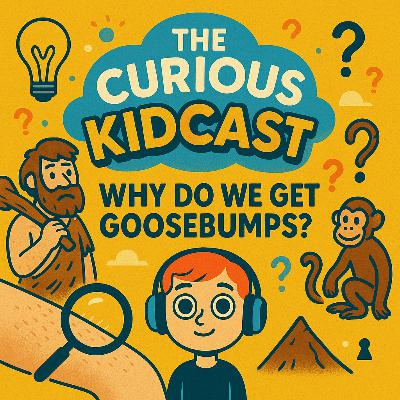
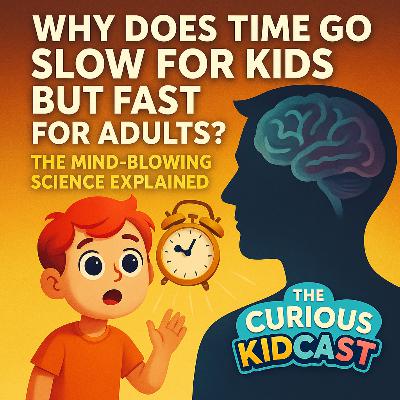
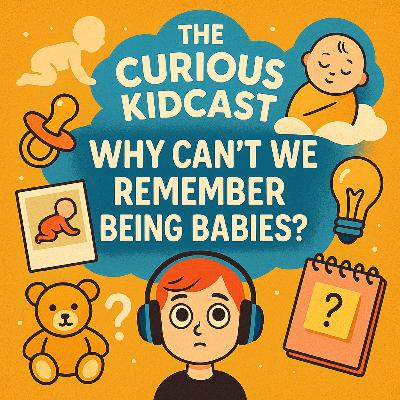

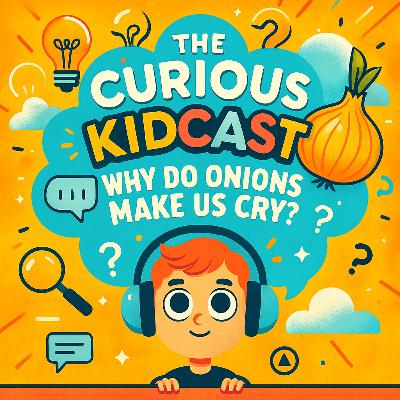

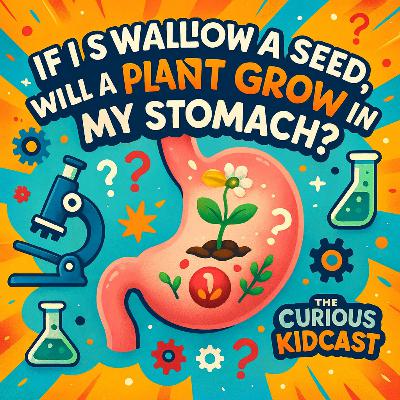



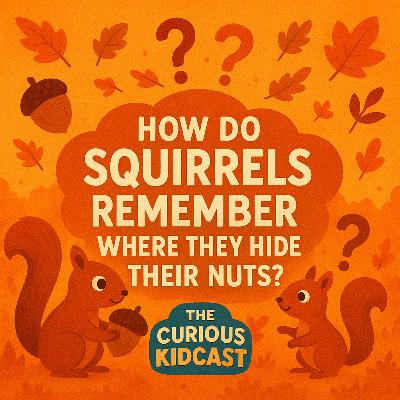
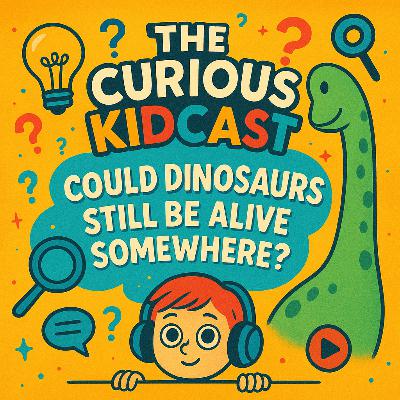
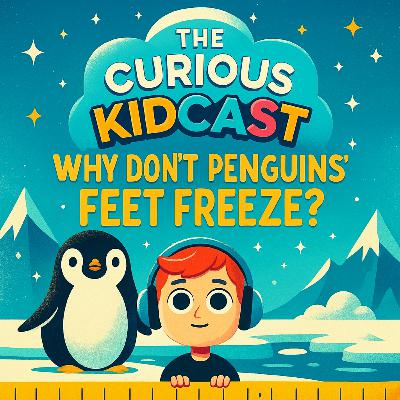
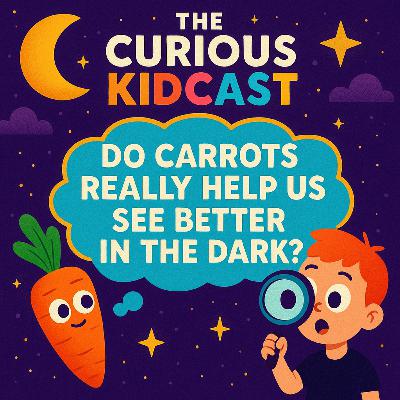




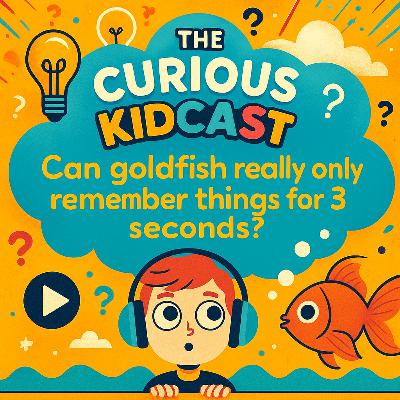



Really enjoy the show, thanks!